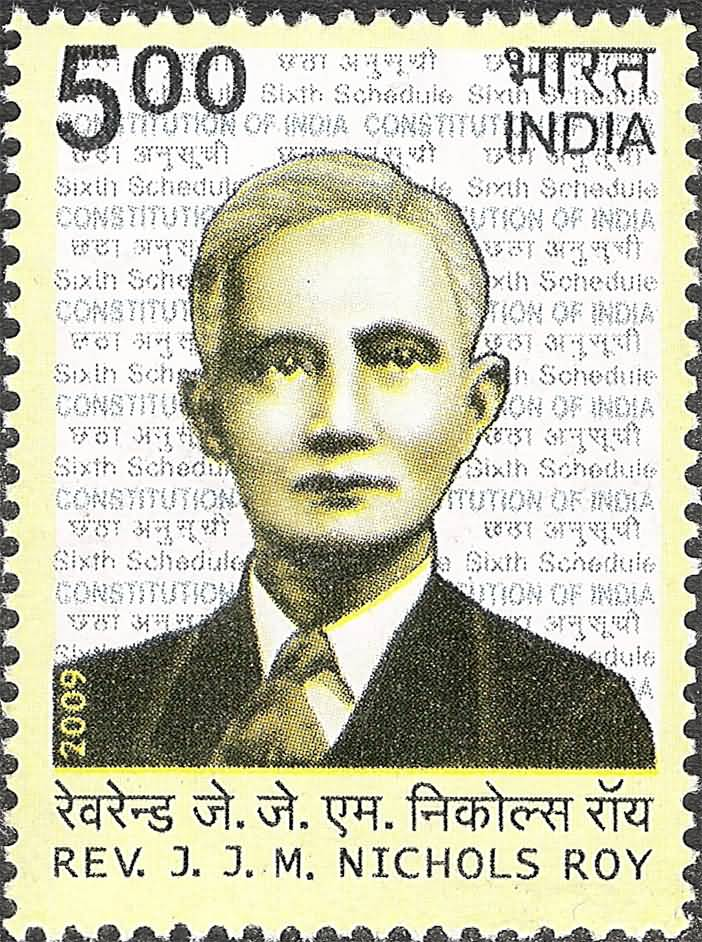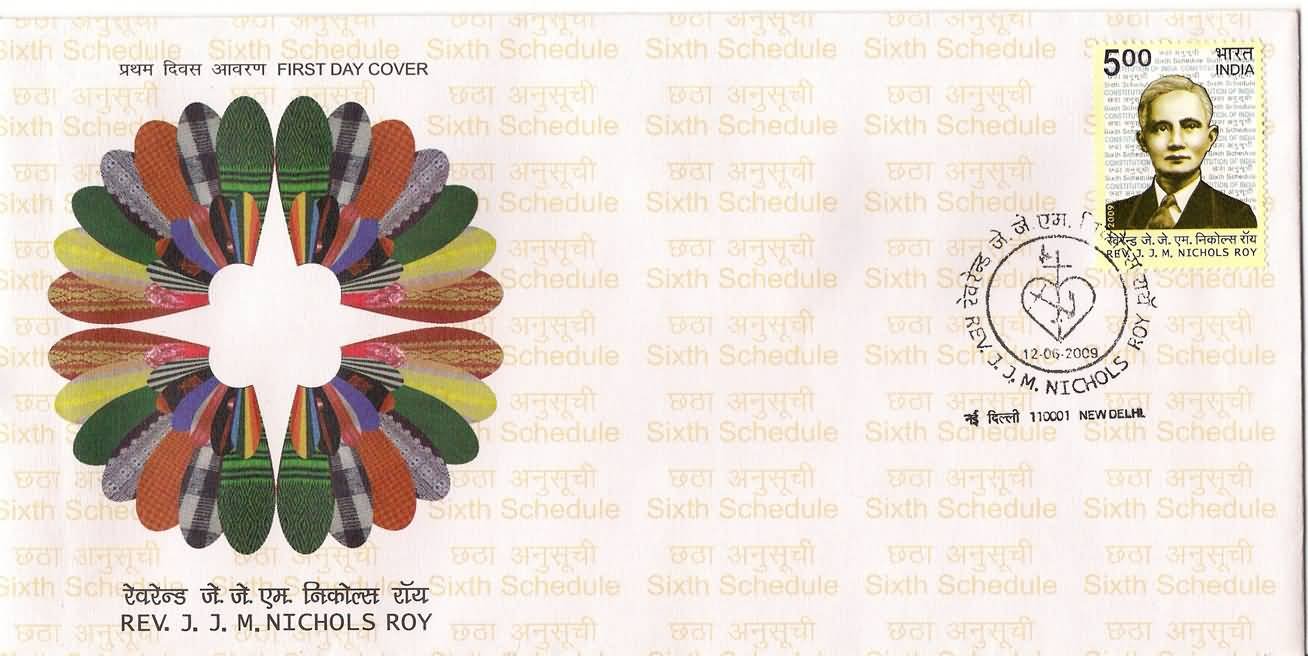Reverend J J M Nichols Roy

Technical Data
| Stamp Set | 125th Birth Anniv. of Rev. J. J. M. Nichols Roy (1884-1959) |
|---|---|
| Date of Issue | June 12, 2009 |
| Denomination | Rs. 5 |
| Quantity | 400,000 |
| Perforation | 13 |
| Printer | India Security Press, Nashik |
| Printing Process | Photo Gravure |
| Watermark | No Watermark |
| Colors | Multicolor |
| Credit (Designed By) | Ms. Nenu Gupta |
| Catalog Codes |
Michel IN 2375 Stamp Number IN 2325 Yvert et Tellier IN 2138 Stanley Gibbons IN 2592 Michel IN IN028.2009 |
| Themes | Anniversaries and Jubilees | Famous people | Men |
Reverend J J M Nichols Roy was the grandnephew of U Tirot Singh of Nongkhlaw Syiemship. He was born at Mawsyiarwait, Shella confederacy on the 12th of June 1884 in a struggling family. His father U Khan Than Roy who hail from Khapmaw in the then Shillong State was a manual daily worker. Both Rev. Nichols Roy’s parents were strangers in brahminical influence Shella society, but had moved there for economic reasons in order to make a living. He studied at Lba High School but was disrupted following a devastating earthquake in 1887.though the great tremor had not bought any significant damage of U Khan Than Roy’s house and his belongings nevertheless together with those who survive in the incidence, decided to shift to a safer place at Jasir. Later Rev. Nichols Roy completed his entrance examination from what is known as the Shillong government High School in 1889. the he went to Kolkatta for higher studies and successfully accomplished his B.A. degree in 1904.
Traditional Democracy and Cultural Roots
Rev. Nichols Roy’s political work had deep cultural implications for the Khasi–Pnar people. Traditionally, they believed in a divine political system called Ki Khad Hynriew Trep (Sixteen Huts). According to oral tradition, seven huts below separated from the nine above, ending contact by removing the “golden ladder” at Lum Sohpet Bneng, a sacred hill.
Though once united, by the early 19th century, when the British arrived, the region had split into 29 independent states, each with its own chief, council, and boundaries. These states had democratic systems but lacked a common federal structure. Over time, differences in language, religion, dress, and customs further divided the people. Rev. Nichols Roy later worked to preserve traditional systems while promoting unity and self-governance within the Indian political setup, ensuring that tribal identity and democratic values remained intact.
Rev. Nichols Roy and the Sixth Schedule: A Vision for Unity
Caught between the British colonial plan and the exclusive federation of Khasi States, Rev. Nichols Roy proposed a balanced solution through the Sixth Schedule of the Indian Constitution. This plan aimed to unite both the state and non-state areas under one autonomous framework and promote the political solidarity of the Khasi–Jaiñtia (Hynñiewtrep) people.
1. Solidifying Khasi–Jaiñtia Identity:
Rev. Roy believed in the shared origin of the Khasi–Jaiñtia people. His Sixth Schedule proposal was built on unity, equality, and fraternity, bringing all tribal areas—whether princely or not—under a single legal and political structure.
2. Reforming Traditional Democracy:
The Khasi traditional system was democratic but limited by hereditary rule and the absence of women’s participation. Rev. Roy sought to preserve these traditions while opening them up—making leadership roles accessible through elections, and including women in governance.
3. Building a Strong Political Structure:
He envisioned a robust, unified legislative body to resist cultural assimilation and safeguard the identity of the tribal communities from external pressures.
Through the creation of the Autonomous District Council, Rev. Roy provided a platform to preserve indigenous systems while adapting to modern democratic governance. His effort was not to erase tradition but to strengthen it with inclusivity and democratic values.
His legacy is summed up in the words:
“Yours is a land for gods to live in… if your hearts were pure.”
Rev. J.J.M. Nichols Roy passed away on 1st November 1959.
First Day Cover

